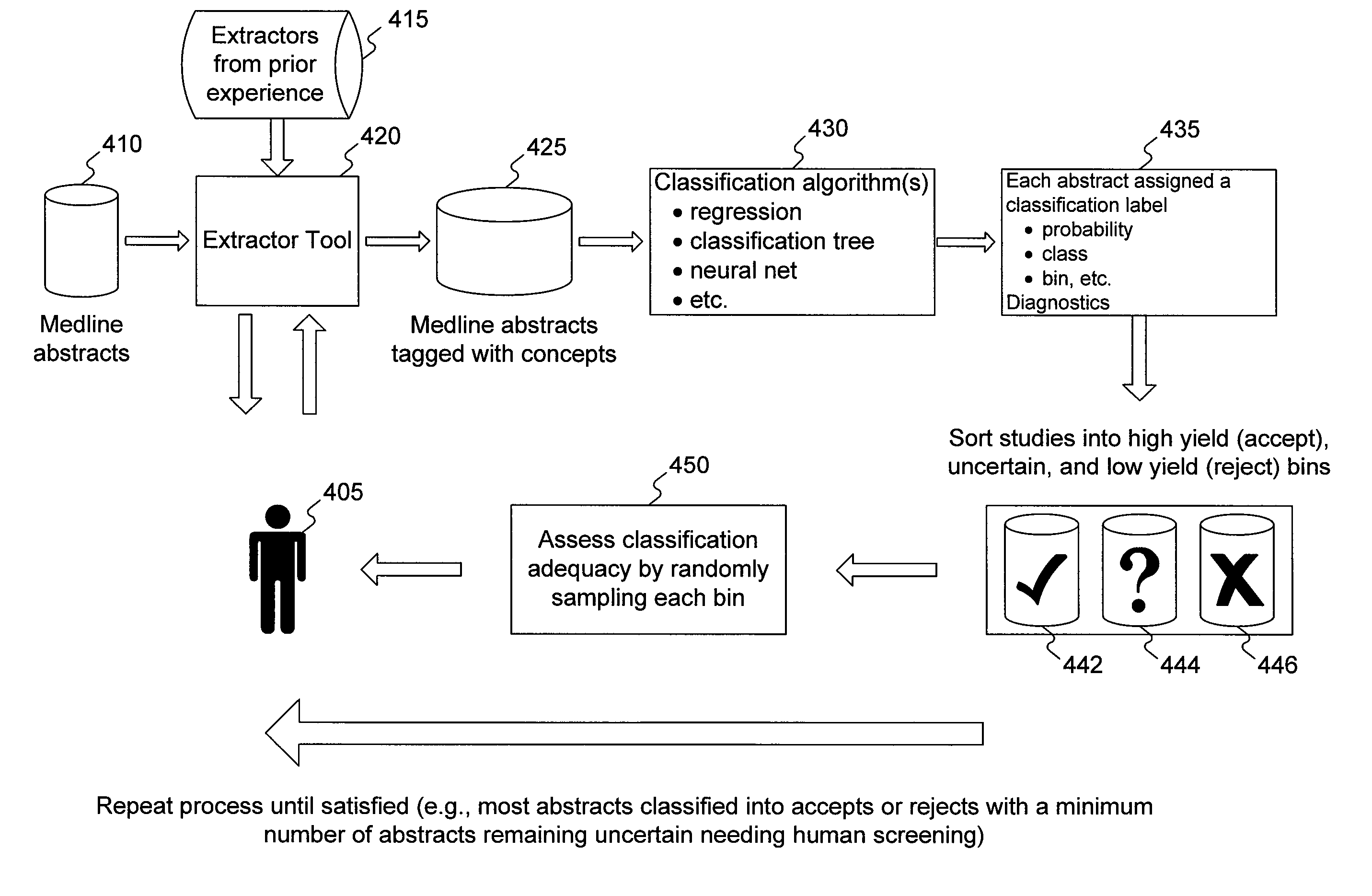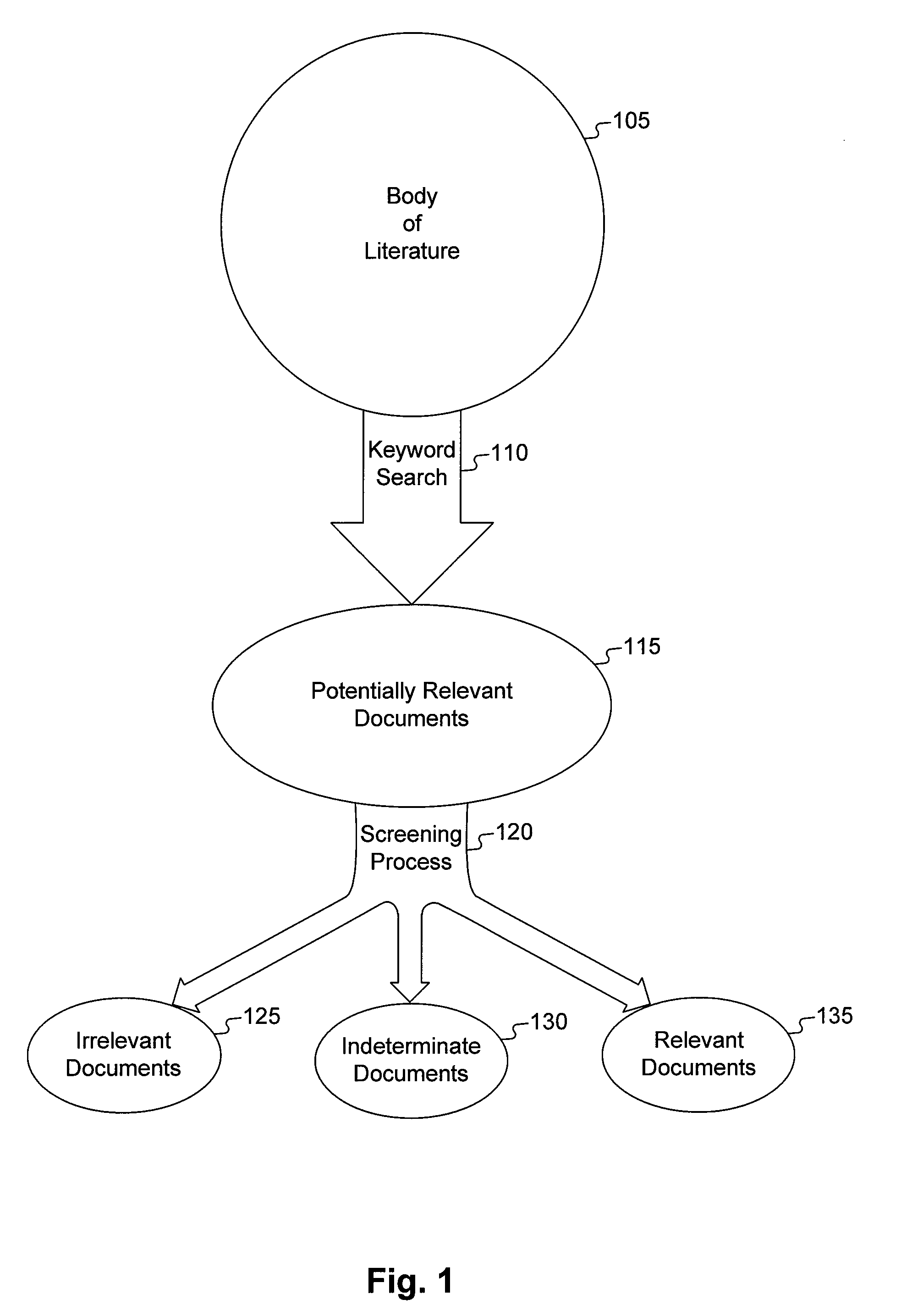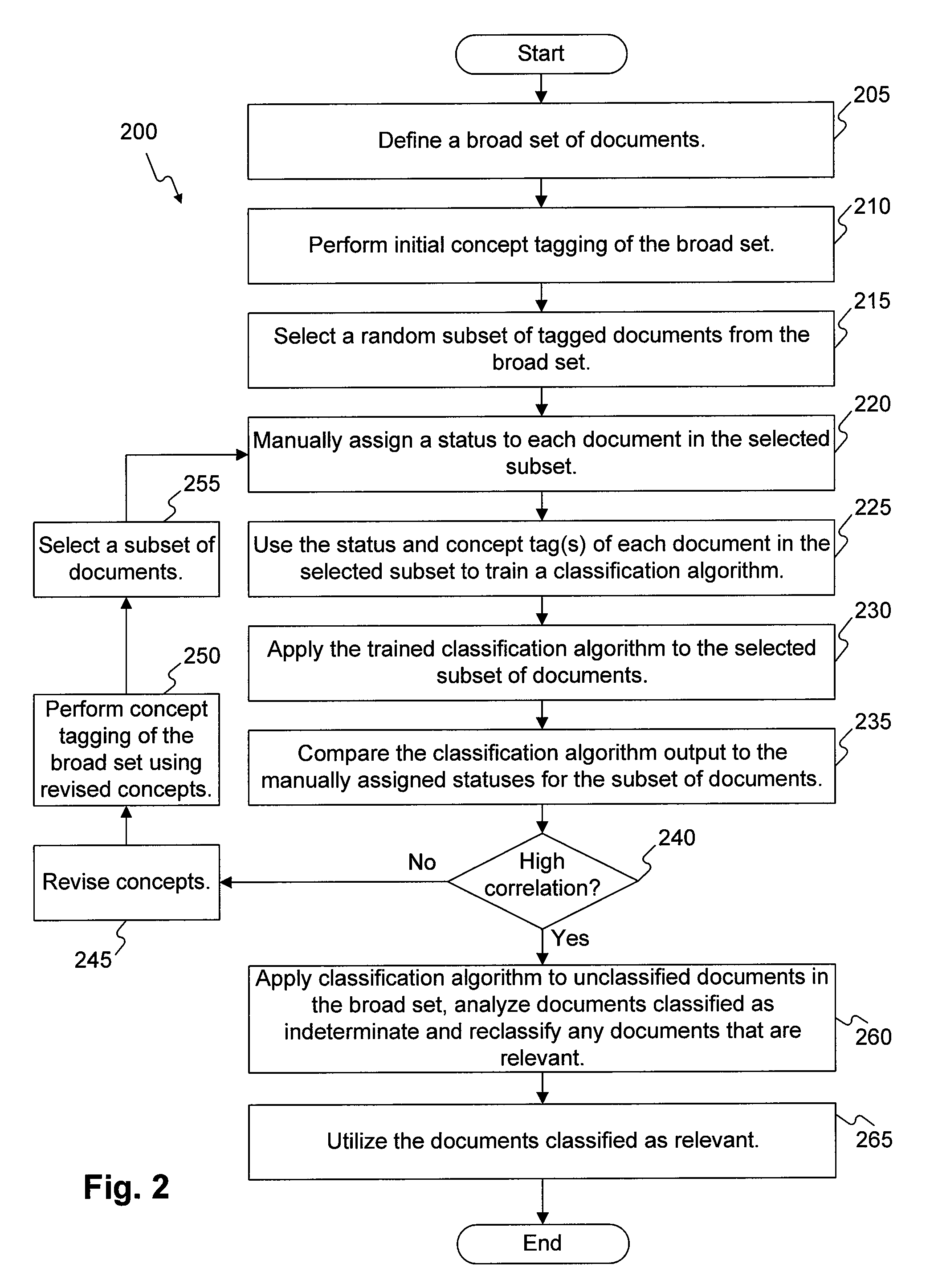Method and system for active learning screening process with dynamic information modeling
a dynamic information modeling and active learning technology, applied in the direction of machine learning, inference methods, instruments, etc., can solve the problems of many drawbacks, tedious and fatiguing manual document screening process, etc., to improve the effect of manual screening process
- Summary
- Abstract
- Description
- Claims
- Application Information
AI Technical Summary
Benefits of technology
Problems solved by technology
Method used
Image
Examples
process 200
[0043]Process 200 is an example of one embodiment consistent with the invention, and it may have stages added, deleted, reordered, or modified without departing from principles of the invention. For example, the analysis and reclassification operations in stage 260 may be deleted in embodiments using binary “relevant” and “irrelevant” classifications for the documents, as such an embodiment will not have any documents classified as “indeterminate.” For another example, stage 230 may be performed on the broad set of documents instead of the subset, and stage 260 may be modified so as not to apply the classification algorithm, because it will already have been done in stage 230.
[0044]FIG. 3 is a flow diagram of an exemplary process for revising document tagging concepts, consistent with principles of the invention. In one embodiment, the exemplary process shown in FIG. 3 may be used to revise the concepts used to tag the broad set of document in stage 245 of FIG. 2. In one embodiment,...
PUM
 Login to View More
Login to View More Abstract
Description
Claims
Application Information
 Login to View More
Login to View More - R&D
- Intellectual Property
- Life Sciences
- Materials
- Tech Scout
- Unparalleled Data Quality
- Higher Quality Content
- 60% Fewer Hallucinations
Browse by: Latest US Patents, China's latest patents, Technical Efficacy Thesaurus, Application Domain, Technology Topic, Popular Technical Reports.
© 2025 PatSnap. All rights reserved.Legal|Privacy policy|Modern Slavery Act Transparency Statement|Sitemap|About US| Contact US: help@patsnap.com



